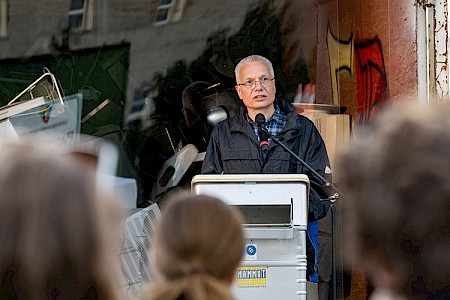
 Das Müllprojekt
Das Müllprojekt
The lecture leads us through a virtual museum in which the relationship of humans and waste is on display. Waste has accompanied humankind from the very beginning. Since waste lives longer, it has often become witness of what and how humans were in their past. But by now the story of waste has left the past and has already occupied a space in the future. By following the traces left by waste, the guided tour through the virtual museum leads into the time-space of the afterworld. There, humans can learn that concealed in their waste is a self-relation. On the flip-side of things an image of man is being mirrored, but it remains mysterious. Even though it is looking right back at us from the mirror, we are not able to recognise or accept it as our self-image.
»Waste sets humankind in a relationship to its environment, its social world and its afterworld. At one time both humans and waste arose from the earth and, at some point, returned to the earth. But a change occurred – with the waste and with humans. Suddenly something had entered the world which could no longer become earth and which was not even supposed to come into contact with the biocycle. The waste produced by humans had turned into the footprint of an alien.«
In the virtual museum, waste seems to show us that the human being we are looking at is someone else, is surely not us. Once humans and waste came from the earth and returned to the earth. But then something changed, with the waste and with humans. Something had come into our world which could no longer become earth, could not even come into contact with the biocycle. Hazardous waste, the remains of the remains, had become something from beyond the earth, the trace of an extraterrestrial, an alien.




christianunverzagt.de